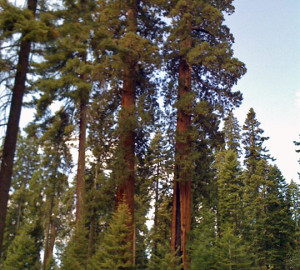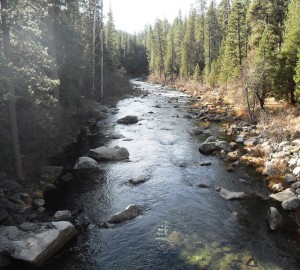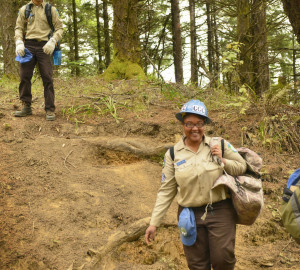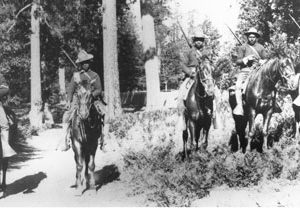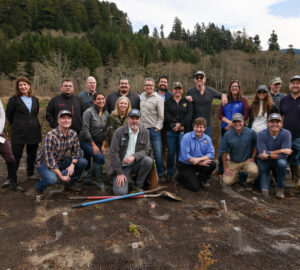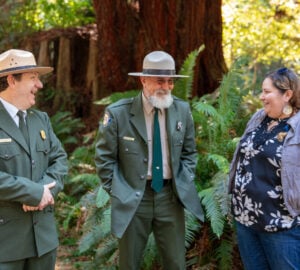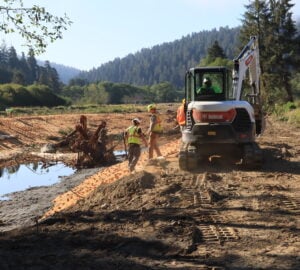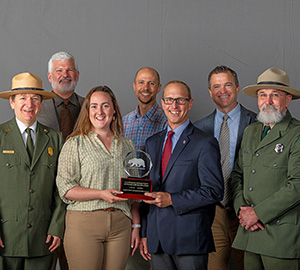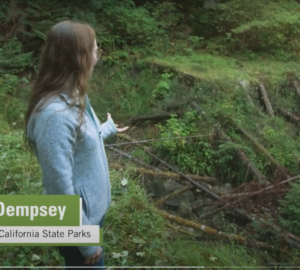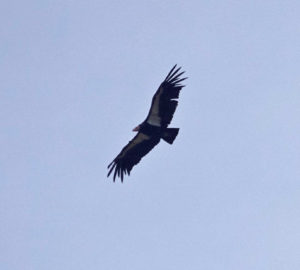Periodic, low intensity-fires are an integral part of western forest systems and understanding them helps our scientists and land managers better care for the redwood landscape. With the 2016 dry season now a distant memory as winter storms drench many parts of the state, I find myself looking back at all the fires that broke out last year in California and how they affected the natural history of the forests in the region.
Due to past timber harvesting activity and decades of fire exclusion, some recently protected League properties, Beaver Creek, Cape Vizcaino, and Shady Dell, are dominated by young, overcrowded forests filled with fuel. The overabundance of young trees in these stands has led to excessive resource competition for water and nutrients. As a result, this is reducing the total amount of available water, increasing physiological stress on the young trees themselves, and affecting the health of larger trees that cannot grow to their full potential under these conditions. The decades of built-up leaf litter and understory vegetation are forming a tinderbox that can cause fires to burn more aggressively and at higher temperatures. All these factors together put our forests at a high risk of catastrophic wildfire unless we conduct the fuels reduction work to deal with these threats. In support of our active stewardship of these lands to address these risks, the League is seeking grant money to fund these fuels reduction projects.
In October last year, we received over $700,000 in public funding to conduct such projects in both the giant sequoia region and the coast redwood range.
Reducing the Risk of Intense Wildfires in the Giant Sequoia Region
This project will help ameliorate the impacts of tree mortality currently affecting the Sierra Nevada region and seek to enhance delivery of water into Beaver Creek, which bisects the property and feeds into the North Fork of the Stanislaus River and its reservoirs downstream. One of the reasons the League originally protected this property was due to its adjacency to Calaveras Big Trees State Park and the old growth giant sequoia groves. Managing the fuel loads of this property will help prevent severe fires from easily spreading into the Park and in turn, protect the landscape in these iconic groves.
Creating Fire “Breaks” in the Coast Redwood Range
In the coast redwood range, the Natural Resources Conservation Service (external link) awarded the League $213,000 to conduct stewardship projects and establish roughly five miles of fire breaks along 111 acres of the ridge tops on our north coast properties in Mendocino, known as Shady Dell and Cape Vizcaino. While there are over 1,000 acres of forestland that could be treated on both sites, one of the top priorities for fuels reduction work is to identify long sections of mountain ridge tops for establishing a continuous break in the fuel loads. When fires burn through a forest, the accumulated small trees and vegetation serve as the tinder for fires to easily climb over hillsides and then spread to surrounding areas. Clearing out those fuels to create a “break” at the top of the ridges, helps prevent fires from spreading further. These paths on the hilltops also provide access for firefighters to more easily traverse through the forest and get in position to contain uncontrolled wildfires.
With the projects underway, the League is working with local contractors and youth crews from the California Conservation Corps to implement the restoration plans at each site. Once the work is complete, the forest will be in a state where it can handle periodic, controlled burns. These fires will not only help stabilize the amount of fuel on the ground but create and maintain biodiversity in the landscape, minimize the population of ticks and other pests, create wildlife habitat structures like snags and basal hollows, and stimulate reproduction for plants that rely on fire for growth and seeding such as redwoods. Through thoughtful stewardship practices, the ways we seek to emulate aspects of the natural state of the forest can also work in conjunction with how we manage forestland into the future.
The League continues to collaborate with universities, researchers, and state and federal agencies on the treatments involved with these fuels reduction and stewardship projects. As we learn more about the effects of these management activities on the health of our forest, we continue to adapt our practices to better steward the land we’ve worked so hard to protect.
You can learn more about the use of fire as a critical land management tool by reading more articles on our blog!
